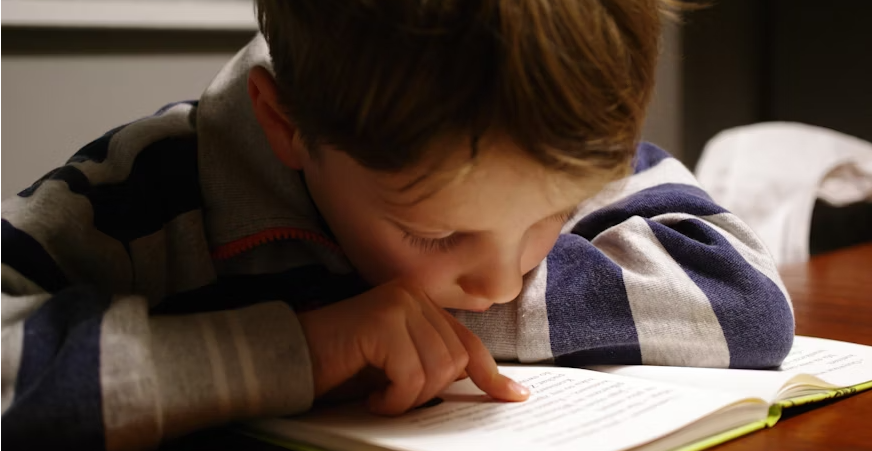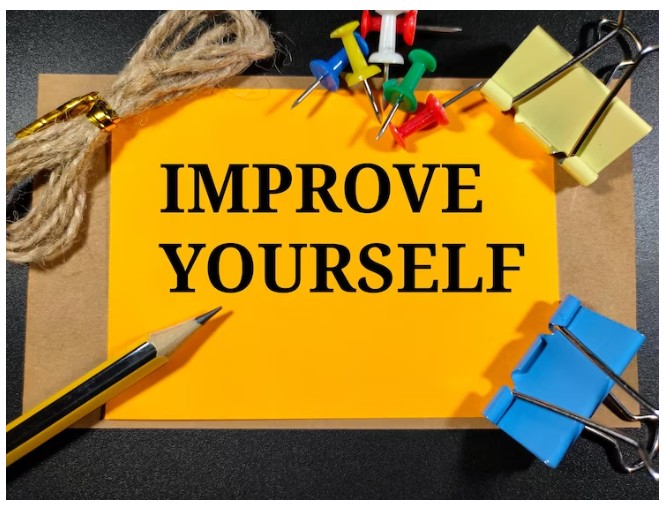Break Free From Self Limiting Beliefs -The Truth About Mental Barriers
What if the biggest obstacle standing between you and your dreams isn’t what you think it is? In just 3 seconds, a simple jar experiment reveals why 95% of people never reach their full potential – and it has nothing to do with talent or circumstances.

Picture this: You’re capable of jumping mountains, but you’ve convinced yourself you can barely hop over pebbles. This is the heart of The Self-Limiting Beliefs Theory, a powerful concept that explains why so many brilliant people live far below their potential. The famous “fleas in a jar” story perfectly illustrates how we create invisible ceilings in our minds that become more real than any physical barrier.
Self-Limiting Belief Theory
The Self-Limiting Beliefs Theory teaches us that our biggest enemy isn’t external circumstances, competition, or lack of resources. Instead, it’s the mental programming we’ve accepted as truth based on past experiences, failures, or what others have told us about our capabilities. Understanding this theory is the first step toward breaking free from the invisible jar that might be limiting your life.
The Flea Experiment
A Lesson in Mental Conditioning
The story begins with fleas – tiny insects that can naturally jump up to 150 times their own height. When researchers placed these athletic creatures in a jar, something fascinating happened. Initially, the fleas jumped with their full power, repeatedly hitting their heads against the lid as they tried to escape.
However, after experiencing this painful collision over and over, the fleas began to modify their behavior. Rather than continuing to jump at full capacity, they learned to jump just high enough to avoid hitting the lid. The conditioning process was complete when researchers removed the lid entirely – yet the fleas never jumped out.
Even with no physical barrier remaining, these powerful jumpers had internalized a new “truth” about their limitations. They had essentially taught themselves that jumping higher would result in pain, so they stopped trying altogether. This powerful metaphor reveals exactly how human psychology works when we face repeated setbacks or failures.
How Mental Barriers Form in Real Life
Just like those conditioned fleas, humans develop self-imposed limitations through similar processes. When we encounter failures, rejections, or criticism, our minds naturally want to protect us from experiencing that pain again. Unfortunately, this protective mechanism often becomes our prison.
Sarah
Consider Sarah, a talented artist who dreamed of selling her paintings. After several gallery rejections in her twenties, she convinced herself she “wasn’t good enough” for professional art. Twenty years later, despite significantly improved skills, Sarah still hesitates to share her work because she’s internalized those early rejections as permanent truths about her abilities.
Marcus
Marcus, a natural leader in his community, never applies for management positions because a harsh boss once told him he “lacked leadership material.” Even though colleagues consistently seek his guidance and respect his opinions, Marcus has accepted this single person’s opinion as fact. His invisible lid prevents him from pursuing roles where he could truly shine.
These examples show how past experiences create mental programming that continues long after the original circumstances have changed. The result is that we operate from a place of learned limitation rather than natural ability.
The Science Behind Self-Limiting Beliefs
Modern neuroscience reveals that our brains are constantly forming neural pathways based on repeated thoughts and experiences. When we consistently think “I can’t do this” or “I’m not smart enough,” these thoughts literally carve grooves in our brain tissue, making these limiting beliefs feel increasingly real and automatic.
Research from Stanford University shows that people who believe their abilities are fixed (a “fixed mindset”) perform significantly worse than those who believe abilities can be developed (a “growth mindset”). The study followed thousands of students and found that mindset was a better predictor of success than initial talent or intelligence.
Dr. Carol Dweck
Dr. Carol Dweck’s groundbreaking research demonstrates that when people understand their brain’s ability to grow and change, they become more resilient, take on greater challenges, and achieve higher levels of success. This neuroplasticity – the brain’s ability to rewire itself – means we can literally change our mental programming at any age.
Furthermore, studies on learned helplessness show that when people or animals experience repeated failures in situations where they have no control, they often stop trying even when circumstances change and success becomes possible. This psychological phenomenon explains why many people remain stuck in limiting situations long after they have the power to change them.
Breaking Free
The Path to Unlimited Thinking
Recognizing that you might be living like a flea in a jar is the first step toward freedom. Here are the key strategies for dismantling self-limiting beliefs and reclaiming your full potential:
Challenge Your Internal Dialogue
Start paying attention to the voice in your head, especially the phrases that begin with “I can’t,” “I’m not,” or “I’ll never.” These statements often reveal deeply held limiting beliefs that deserve questioning. Ask yourself: “Is this actually true, or is this based on old information?”
Examine the Evidence
When you catch yourself accepting a limitation as fact, investigate where this belief originated. Was it based on one person’s opinion? A failure from years ago? Limited information about what’s actually possible? Often, you’ll discover that your “evidence” is outdated or irrelevant to your current situation.
Reframe Past Failures
Instead of viewing setbacks as proof of your limitations, start seeing them as valuable data and learning experiences. Every successful person has a trail of failures behind them – the difference is they used those experiences as stepping stones rather than stopping points.
Surround Yourself with Growth-Minded People
The people around you significantly influence your beliefs about what’s possible. Spend time with individuals who challenge you to grow, support your dreams, and demonstrate that limitations can be overcome through persistence and learning.
Self-Limiting Beliefs Identification Chart
| Area of Life | Common Limiting Beliefs | Evidence to Question | Growth-Focused Alternative |
| Career | “I’m not leadership material” | Based on one boss’s opinion? | “I can develop leadership skills” |
| Relationships | “I’m not worthy of love” | Past rejections define me? | “I’m learning to build healthy connections” |
| Finances | “Money is the root of all evil” | Cultural programming? | “Money is a tool for positive impact” |
| Health | “I have bad genetics” | Lifestyle factors ignored? | “I can improve my health through choices” |
| Creativity | “I’m not artistic” | Never had proper training? | “Creativity can be developed with practice” |
| Learning | “I’m too old to learn new things” | Age stereotypes? | “My brain continues growing throughout life” |
Real-Life Success Stories
From Limited to Limitless
Colonel Sanders was 62 when he started KFC, after facing numerous business failures throughout his life. Despite restaurants rejecting his chicken recipe 1,009 times, he refused to accept that age or past failures defined his future. His persistence transformed him from a struggling entrepreneur into a global business icon. He was a late-bloomer triumph.
Overcoming Physical Challenges
Nick Vujicic was born without arms or legs, facing physical limitations that could have defined his entire existence. However, he refused to accept society’s expectations about what someone with his condition could achieve. Today, he’s an internationally renowned motivational speaker, author, and entrepreneur who has inspired millions to overcome their own perceived limitations.
Breaking Academic Barriers
Richard Branson struggled with dyslexia throughout school, leading teachers and even family members to doubt his academic potential. Rather than accepting this limitation, he found alternative ways to learn and communicate. His learning difference actually became a strength, helping him think creatively and build Virgin Group into a multi-billion-dollar empire.
These stories illustrate a crucial truth: external limitations often become irrelevant when internal barriers are removed. Each of these individuals succeeded not despite their challenges, but because they refused to let circumstances define their possibilities.
Practical Exercises to Expand Your Mental Boundaries
The Possibility Audit
Write down five things you’ve always wanted to do but believed were impossible for you. Next to each item, list the specific beliefs that have stopped you. Finally, research one person who has achieved something similar despite facing comparable or greater challenges.
The Growth Challenge
Choose one small limitation you’ve accepted about yourself and spend 30 days deliberately challenging it. If you believe you’re “not a morning person,” wake up early for a month. If you think you’re “bad with technology,” commit to learning one new digital skill weekly.
The Success Story Collection Start collecting stories of people who have overcome limitations similar to yours. Create a journal or digital folder where you document these examples. When self-doubt creeps in, review these stories to remind yourself that your barriers aren’t permanent.
The Belief Archaeology
Dig deep into the origins of your most persistent limiting beliefs. When did you first start believing this about yourself? What evidence do you have that this belief is still accurate? How would your life change if this belief were simply wrong?
Creating a Limitless Future
Breaking free from self-limiting beliefs isn’t about positive thinking or denying real challenges. Instead, it’s about accurately assessing what’s actually possible versus what you’ve been conditioned to believe is possible. The difference between these two realities is where your untapped potential lives.
Remember that the fleas in the jar story isn’t just about individual psychology – it also reflects how families, communities, and entire cultures can pass down limiting beliefs from generation to generation. Breaking free from these patterns doesn’t just transform your own life; it gives permission for others around you to expand their possibilities as well.
The most successful people in any field share one common characteristic: they regularly question and challenge their own limitations. They understand that what seems impossible today might become routine tomorrow, but only if they’re willing to keep jumping higher than their current ceiling allows.
As you move forward, keep in mind that removing the lid from your mental jar is an ongoing process, not a one-time event. Each time you push past a perceived limitation, you’re rewiring your brain to expect growth rather than restriction. This cumulative effect compounds over time, leading to achievements that once seemed completely unrealistic.
Self-Limiting Beliefs FAQ
What is the jar of fleas theory?
The jar of fleas theory is a metaphor for self-limiting beliefs. It describes how fleas placed in a jar with a lid learn to jump only as high as the lid allows. Even when the lid is removed, they never jump out because they’ve been conditioned to believe they can’t jump higher. This represents how humans create mental barriers that persist even after external obstacles are gone.
What is the lice in a jar experiment?
This likely refers to the same concept as the flea experiment. While often presented as scientific research, it’s actually an allegorical story used to illustrate how conditioning creates self-imposed limitations. The story teaches us about psychological barriers rather than documenting actual insect behavior.
How far could a human jump if they were a flea?
If humans had the jumping ability of fleas relative to body size, we could jump approximately 900 feet high and 1,500 feet horizontally. Fleas can jump up to 150 times their body length, making them some of nature’s most impressive athletes. This comparison highlights just how powerful we could be if we removed our mental limitations.
What is the flea effect?
The flea effect describes the psychological phenomenon where past limitations continue to influence behavior even after those limitations have been removed. It explains why people often stay trapped in old patterns despite having new opportunities, resources, or capabilities. The effect shows how mental conditioning can be more powerful than physical barriers.
How do you know if your life is like fleas in the jar?
Signs you might be living like a flea in a jar include avoiding opportunities because of past failures, accepting others’ opinions about your limitations as facts, feeling stuck despite having resources to change, repeating “I can’t” or “I’m not good at” statements, and staying in comfortable but restrictive situations. If you find yourself shrinking your dreams to fit past disappointments, you may have invisible barriers limiting your potential.
How do you break the cycle of limiting beliefs?
Breaking limiting beliefs requires identifying specific beliefs holding you back, questioning the evidence supporting these beliefs, challenging yourself with small growth experiments, surrounding yourself with growth-minded people, celebrating small wins to build confidence, and consistently exposing yourself to examples of others who’ve overcome similar limitations. The key is taking action despite the discomfort, gradually expanding your comfort zone through experience rather than just positive thinking.
Final Thoughts
Your Lid Has Already Been Removed
The most liberating truth about The Self-Limiting Beliefs Theory is this: most of the barriers you believe are blocking your path have already been removed. Like the fleas in the jar, you have far more power and potential than your past experiences have taught you to believe.
Your invisible lid might be fear of failure, concern about what others think, lack of confidence in your abilities, or simply the comfort of familiar limitations. Whatever form it takes, remember that it’s not a permanent fixture in your life – it’s a temporary obstacle that exists primarily in your mind.
The moment you truly understand that your potential is not determined by your past, your circumstances, or other people’s opinions, everything changes. You begin to see opportunities where you once saw only obstacles, possibilities where you once saw only problems, and growth where you once saw only limitations.
Today marks the beginning of your journey from limited thinking to limitless possibility. The lid on your jar has been removed – now it’s time to jump higher than you ever thought possible.
Remember: The only limits that truly exist are the ones we choose to accept.
References and Current Research
- Dweck, Carol S. (2024). “Mindset: The New Psychology of Success” – Updated research on growth mindset and neuroplasticity
- Bandura, Albert (2023). “Self-Efficacy: The Exercise of Control” – Latest findings on belief systems and performance outcomes
- Harvard Business Review (2024). “Breaking Through Mental Barriers in Leadership” – Corporate research on executive limiting beliefs
- Journal of Positive Psychology (2024). “Neuroplasticity and Belief Change in Adult Learning” – Recent neuroscience studies on rewiring limiting beliefs
- Stanford Psychology Department (2024). “Long-term Effects of Growth Mindset Interventions” – 10-year follow-up study on mindset training programs
- American Psychological Association (2024). “Learned Helplessness and Recovery Strategies” – Updated research on overcoming psychological barriers
Note: While the “fleas in a jar” story is a powerful metaphor, it should be understood as an allegorical teaching tool rather than documented scientific research. The psychological principles it illustrates, however, are supported by extensive research in cognitive psychology and neuroscience.
The Blue Gene Team
(w) mybluegenes.com
(e) rachele@ mybluegenes.com






